Categories
Subjects
Authors
Artists
Venues
Locations
Calendar
Filter
Done
January 24, 2023 – Review
Andrea Fraser
Wendy Vogel
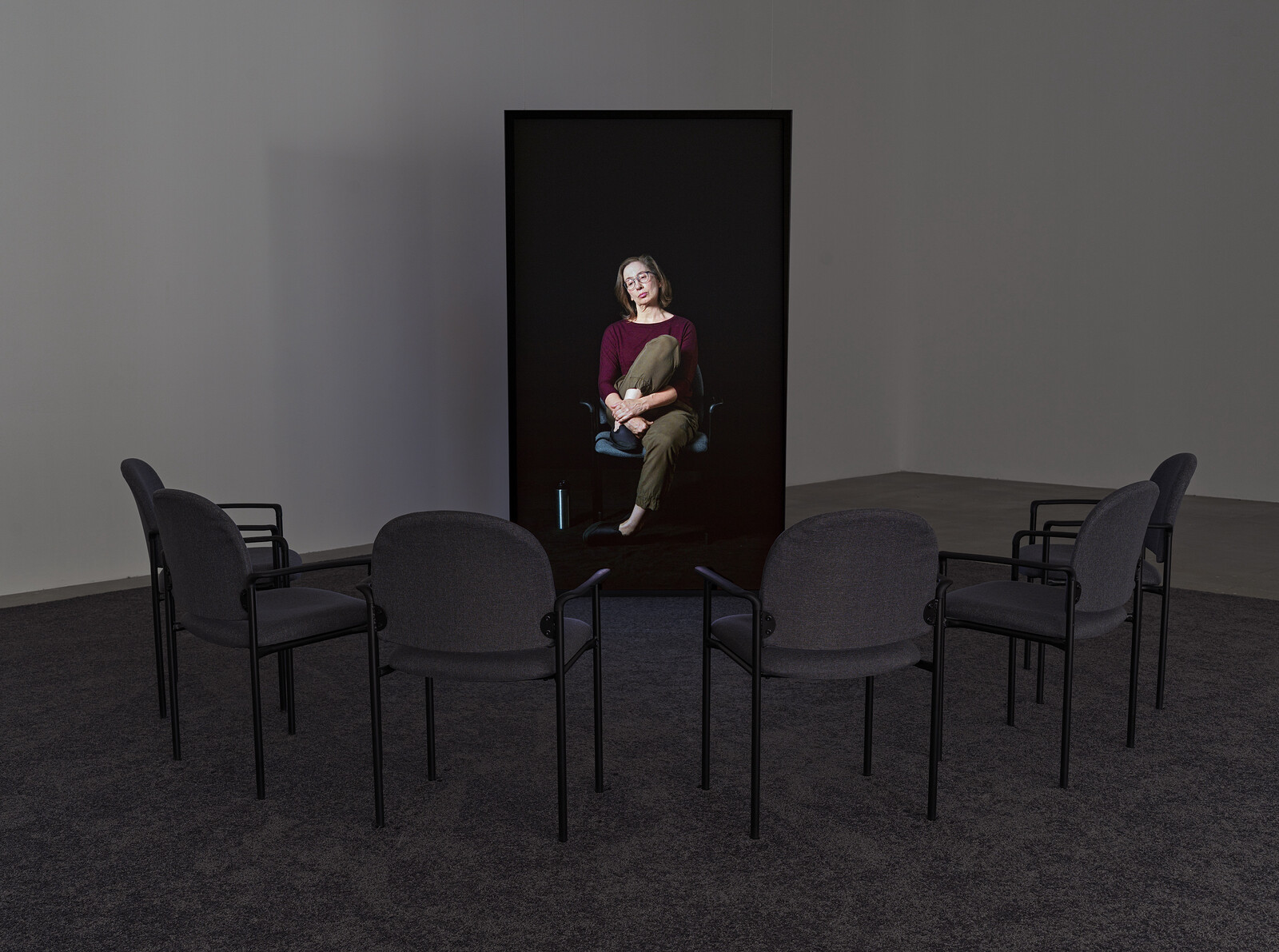
In 2005, Andrea Fraser’s consideration of the art world appeared to undergo a transformation—from externalization to embodiment. “If there is no outside for us, it is not because the institution is perfectly closed,” she wrote. “It is because the institution is inside of us, and we can’t get outside ourselves.” This sentiment of identity entrapment is nowhere more evident than in her latest work, This meeting is being recorded (2021), in which the shape-shifting artist portrays seven white women in a closed-door meeting about internalized racism. The ninety-nine-minute video—which is based on real conversations and debuted at the Künstlerhaus Stuttgart before traveling to the Hammer Museum in Los Angeles last year—forms the nucleus of Fraser’s first US commercial gallery show in 13 years. The five works on view, from the late 1980s onward, get a new, retroactive reading from her current perspective of grappling with the complex, emotive terrain of racial privilege.
Fraser’s best-known performances offer pitch-perfect approximations of art speak and style, from staid guided tours to overblown acceptance speeches by egotistical artists, threaded with a feminist criticality toward gendered modes of presentation. Two major works from the 1990s, commissioned by the Wadsworth Atheneum and the São Paulo Bienal, …
June 10, 2021 – Review
Nan Goldin’s “Memory Lost”
Talia Curtis

Since the advent of the US’s “War on Drugs,” popular media representations from Breaking Bad to Intervention to Celebrity Rehab with Dr. Drew have mirrored the political consensus on drug addiction, reducing it from a deeply political phenomenon driven by markets—both the pharmaceutical industry and underground economies—to a dialectic of stylized euphoria on the one hand and abject depravity on the other. Both the media landscape and the rehab industrial complex drip with a Protestant ethic that pits puritanism against hedonism: addiction is rendered as a moral failing, not what a growing scientific and sociological consensus understands as one symptom of a profit-driven healthcare system, systemic racism, and gross income inequality.
Nan Goldin’s work is antithetical to ideas of addiction that, by painting it as a personal failing, obstruct any substantive response to a devastating health crisis in favor of subjecting vulnerable populations to punitive violence. Against this backdrop, Marian Goodman Gallery’s first New York exhibition of Goldin’s work highlights several major pieces, including Memory Lost (2019–21), an impressionistic slideshow of life seen through the experience of addiction; its thematic sister Sirens (2019–20), a video work approximating the hypnotic ecstasy of being high; and The Other Side (1992–2021), an update of …
September 18, 2020 – Review
Tavares Strachan’s “In Plain Sight”
Orit Gat
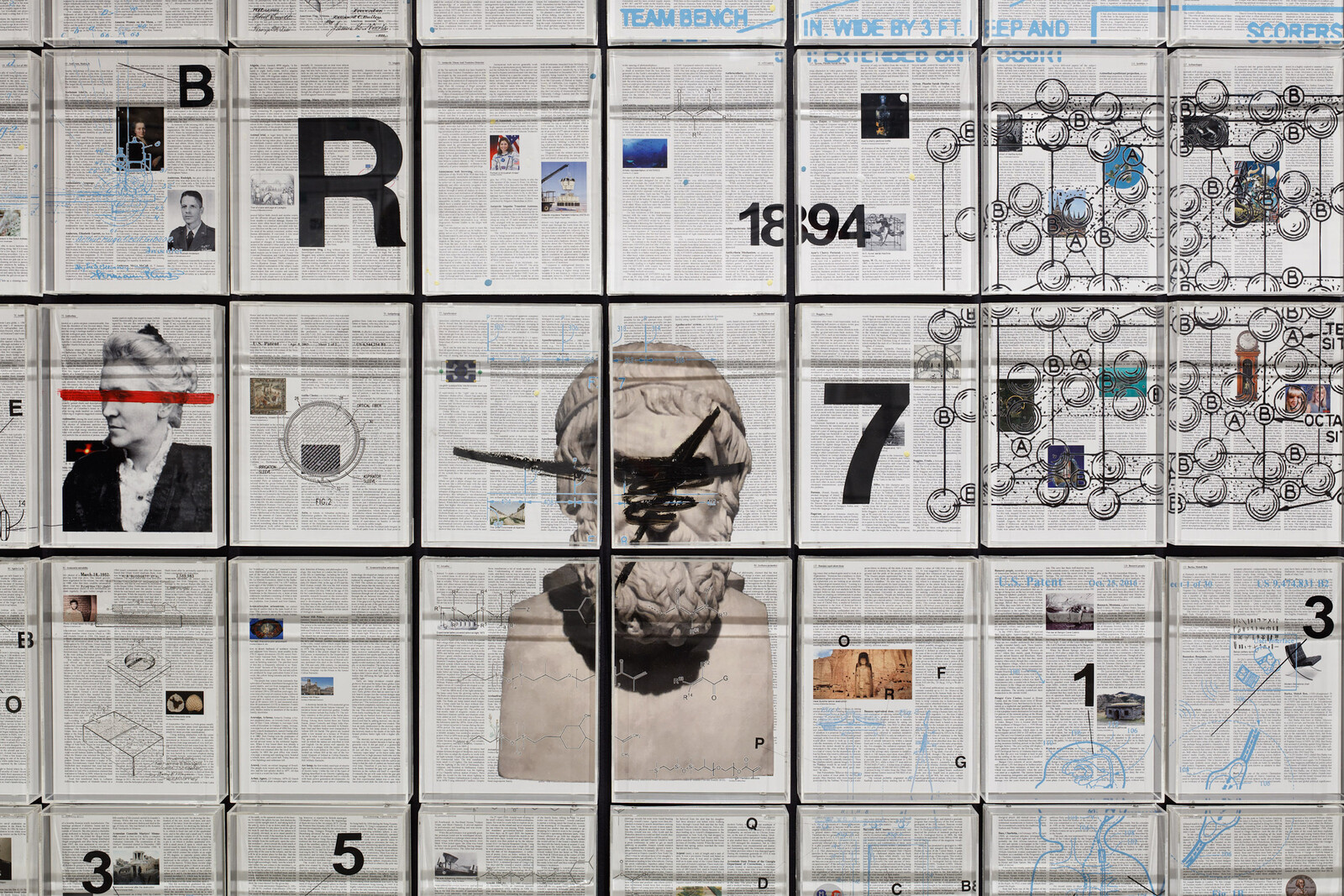
How are stories told? Who is remembered, who forgotten, and why? Which narratives last and what histories remain unaccounted for? These are questions of the moment, when representation is crucial to political struggle and debates on decolonial knowledge gain mainstream traction. Tavares Strachan’s exhibition at Marian Goodman suggests that what was neglected was always in plain sight, and that what was missing from the narrative was often not image-making but storytelling.
A large, leather-bound and gilded book is displayed in a mahogany and glass case. Titled The Encyclopedia of Invisibility (Mahogany #9) (2018), it is part of an ongoing project that has featured in different iterations in several of Strachan’s previous exhibitions: its thousands of pages include entries dedicated to people, places, and events that were omitted from the Encyclopaedia Britannica, that is, systemically sidelined by Western history. At the most recent Venice Biennale, he displayed another version of the work, subtitled White (also 2018), along with pieces dedicated to Robert Henry Lawrence Jr., the first African American astronaut, who died in a training accident in 1967. “In Plain Sight” departs from another African American explorer: Matthew Henson, who was part of an expedition with Robert Peary and four Inuits …
November 12, 2019 – Review
Danh Vo’s “untitled” and “Cathedral Block, Prayer Stage, Gun Stock”
Harry Thorne
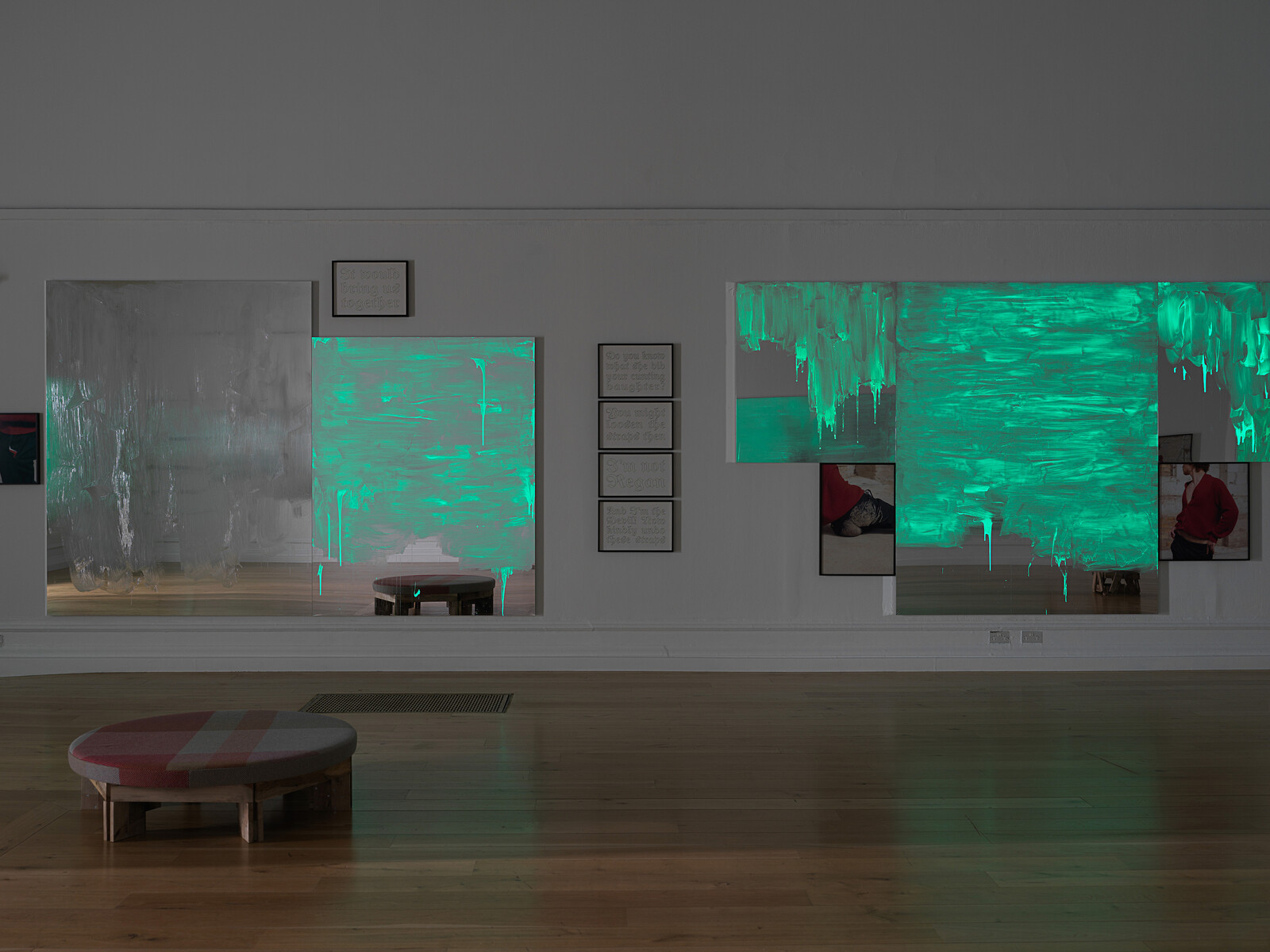
We create our own artworks. Regardless of their maker or mark, we push ourselves through the objects and images that deign to confront us and, as such, shape ourselves and our newfound companions into something other than we were before. It could be said that when we interact with art objects, we actively collaborate with another, with one another, which is a pleasant way of narrativizing our lowly passage through life: we work alongside the many things of the world so as to generate meaning.
This notion of incorporeal co-existence would suggest that the self is an entity less fixed and singular than it is multivalent, multiplicitous, more. The memory of Édouard Glissant floats, preaching the oft-quoted pledge “not to be a single being”; Antonio Gramsci, cited prominently in Edward Said’s Orientalism (1978), writes of “‘knowing thyself’ as a product of the historical process to date, which has deposited in you an infinity of traces.” Self as infinity. Infinity as self.
Vietnam-born Danish artist Danh Vo speaks in similar tones: “I don’t really believe in my own story, not as a singular thing anyway. […] I see myself, like any other person, as a container.” But are we containers or conduits? Do …
May 7, 2019 – Review
Allan Sekula’s “Photography, A Wonderfully Inadequate Medium”
Kylie Gilchrist

In one gruelingly unedited scene of Allan Sekula’s three-hour film essay Lottery of the Sea (2006), a figure suited head-to-toe in white Tyvek hauls a gluey black lump across a slate-gray jetty. Steely waves wash up pebbles of oil, which she collects by rolling or smashing the lump upon them. Her mass will soon be lobbed into a rubber basket, foisted up a dune by a chain of hands, and deposited in a sea of oily baskets awaiting removal. The labor of viewing this protracted sequence faintly echoes its subject: the Sisyphean task of cleaning an oil spill on Spain’s Galician coast, accomplished by volunteers and by hand. In a world where most things are—as Sekula says of a Greek fish market at the film’s start—“fresh but dead,” the scene’s weary, weather-worn figures testify to the fragile solitaries born in struggles to resist the wholesale extermination of human and non-human life.
The film is housed in a screening room at the center of an exhibition purportedly dedicated to Sekula’s photography, underscoring the latter medium’s distinctive feature for the artist: its insufficiency. True to the exhibition’s title, photography’s limitations are foregrounded throughout. The opening sequence of works features Sekula’s early engagement …
October 10, 2017 – Review
Amar Kanwar’s “Such A Morning”
Colin Perry
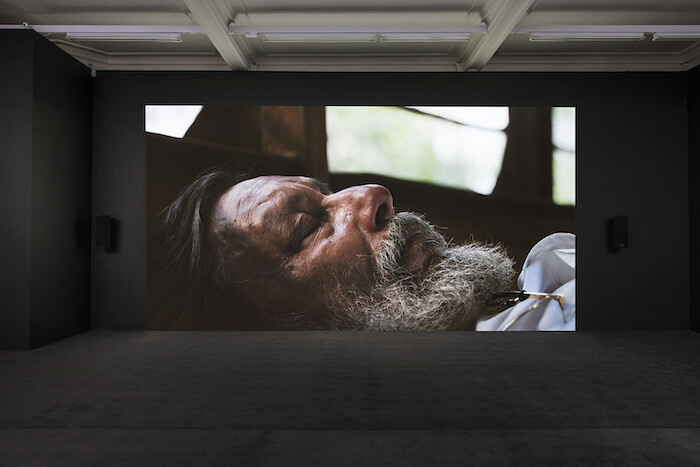
Amar Kanwar’s latest video installation delves into more mystical concerns than the documentary format, for which he is known, might seem capable of containing. The eponymous single-channel video at the heart of “Such A Morning” (all works 2017) is an exquisitely installed piece of visionary slow cinema—a work whose mode comes close to magical realism, speculative fiction, or fractured moral parable. Where Kanwar’s earlier films always had one foot in reality, this 85-minute work unfurls a loose narrative in which a famous but unnamed mathematics professor quits his job for no good reason (his colleagues guess at a “deep inner question of the soul” or “a complex conflict of ideology and prejudice”), and retreats to the wilderness to live in an abandoned train carriage. Previously installed at Documenta 14, Such A Morning voices a general existential question: how to live in the present?
Such A Morning is a cinema of affect at its most seductive. Kanwar’s camera captures verdant leaves, rust, and old wood; his soundtrack includes traditional Indian music of flutes and strings. Immersed in this sensorial world, the mathematician’s mind appears to transcend the world of logic, deduction, and syllogisms, to a new plane of emotional resonance between environment …
June 2, 2017 – Review
Dara Birnbaum’s “Psalm 29(30)”
Leo Goldsmith
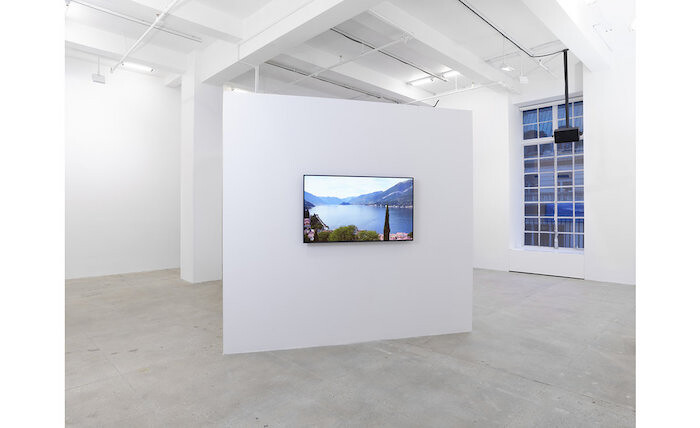
Six years in, Syria’s Civil War has been the subject of a vast quantity of information—in the form of user-generated video, reportage, news analysis, social media updates—and yet we seem no nearer to an adequate means of representing it. Representation and resolution are often intertwined: the clarity of a representation, the point at which visual material resolves into an image, is a question of the way in which content is subjected to form. We are still seeking a form with which to organize the barrage of information from Syria into a coherent image that will make the conflict materially sensible for those only able to apprehend it from afar.
Documentary media have historically been the privileged modes through which to process such crises. News reportage now constitutes the most prolific of these, if also the noisiest. But contemporary art, with its recently intensifying interest in strategies of documentary, has been quick to respond as well: through photography and reenactment—such as Ai Weiwei’s restaging of the shocking photograph of Alan Kurdi, the Syrian toddler who drowned off the coast of Turkey, with the artist himself as the dead child—as well as more “archival,” object-based exhibitions of work made by Syrian artists or …
January 17, 2017 – Review
Gordon Matta-Clark
Mara Hoberman

“If anything emerges to cut up, I’ll go anywhere, anytime” wrote Gordon Matta-Clark in 1975. Earlier that year, Paris had come calling, and, at the invitation of the ninth edition of the Paris Biennale curated by Georges Boudaille, the artist realized Conical Intersect (1975). Photographs, photomontages, and film footage of Matta-Clark’s highest profile project in Paris (where he spent considerable time during his short lifetime) are now on view as part of the artist’s first solo show in France since 2000.
Conical Intersect, an enormous oculus that Matta-Clark carved through two abutting seventeenth-century apartment buildings on rue Beaubourg, is a spectacular example of what Matta-Clark described as his practice of “anarchitecture” as well as a case study of how the artist engaged with physical and sociopolitical structures. Overlooking the construction site where the Richard Rogers and Renzo Piano-designed Pompidou Center would open two years later, Conical Intersect created a giant peephole onto gentrification in-progress. Matta-Clark cited Anthony McCall’s seminal light and fog installation Line Describing a Cone (1973) as inspiration, but Conical Intersect’s corkscrew form also evoked the tornado of controversy surrounding its neighbor. Though the Pompidou Center is now an architectural icon and top tourist attraction, it was initially much …
February 7, 2014 – Review
Tacita Dean’s “JG”
Mara Hoberman
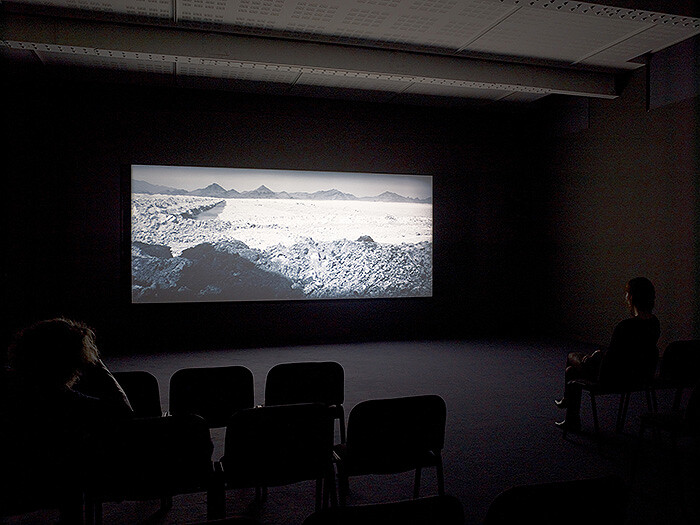
In the late 1990s, equipped with directions furnished by the Utah Arts Council, Tacita Dean traveled to the Great Salt Lake in search of Robert Smithson’s Land art masterpiece Spiral Jetty (1970). Though she was ultimately unsuccessful in locating the massive earthwork (likely, it was submerged at the time), her thwarted pilgrimage was far from unfruitful. Having inspired an early sound piece, Trying to Find Spiral Jetty (1997), Smithson’s elusive anti-monument resurfaces—so to speak—sixteen years later in Dean’s latest film, JG (2013). Titled after the late author J.G. Ballard—with whom Dean enjoyed a long-running correspondence based on their mutual interest in Smithson’s work—the 26.5 minute, 35mm film pairs footage of saline landscapes in Utah and California with a voiceover culled from various texts by Smithson and Ballard, including the latter’s 1960 dystopian short story “The Voices of Time.” Offering alternate glimpses into Dean’s salt-infused experience, the current exhibition presents JG in the company of a number of related photographs, paintings, prints, and objects.
Projected widescreen on a continuous loop in the basement of Marian Goodman’s Parisian gallery, JG is a slide show-like succession of landscapes ranging from snowy-white salt flats and crystalline stalagmites to turquoise-blue thermal lakes and fiery sunsets. Making …
April 22, 2013 – Review
Danh Vo’s “Mother Tongue”
Arnaud Gerspacher
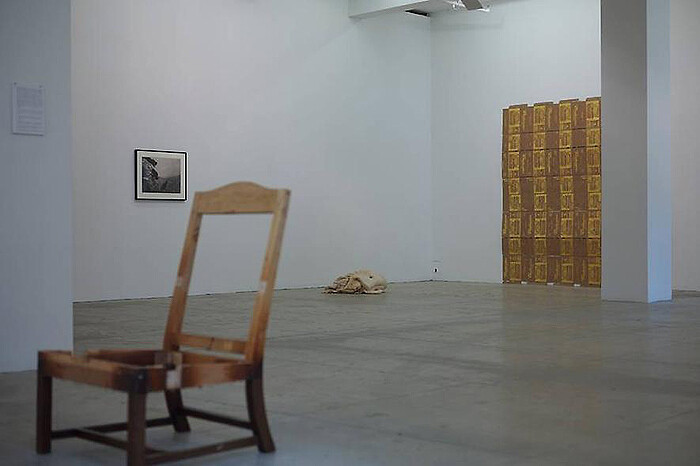
The plush trappings of power, stripped down and isolated: this seems to be one of the themes and strategies of Danh Vo’s show “Mother Tongue” at Marian Goodman Gallery. The title comes from a small calligraphic drawing by the artist’s father, Phung Vo, who, while not knowing the language he writes in, inscribes Gothic stenciled letters on this and various other objects, such as gilded cardboard boxes of Budweiser (Promised Land, 2013). While there are a smattering of works represented in this diverse show, the dominant centerpiece is a quasi-archeological project displaying “finds” from a recent Sotheby’s auction of Robert McNamara’s belongings. Acquired by Vo and Marian Goodman, these objects have now found a new home in the art world, functioning both as political history and contemporary art.
Unlike the show’s title, the McNamara work seems to be less about translation or a mother tongue than about the looming presence of a domineering father. Bureaucratic relics used by the former U.S. Secretary of Defense during the Vietnam War have been either strewn about the two larger gallery spaces, or crisply displayed in backlit vitrines along the narrow corridor connecting the two galleries. This latter setup and its artifacts are the most …
November 24, 2010 – Review
Pierre Huyghe at Marian Goodman, Paris
Filipa Ramos
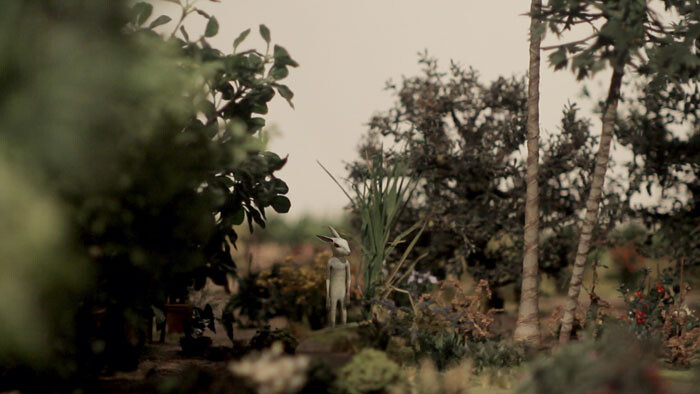
The Host and the Cloud, the most recent work of Pierre Huyghe, is an overwhelming mise-en-scène of the contemporary imaginary. The action (of the film) takes place in the former building of the Musée National des Arts et Traditions Populaires. Built by Jean Dubuisson—a disciple of Le Corbusier—and located in the Bois de Boulogne, it was an innovative experiment, conceived to offer a synthetic vision of the traditional French society and constituted as a museum-laboratory, in which conservators and researchers worked close together. Thus, this architectonic monument becomes the set of a vertiginous journey into the heart of pure thought and basic instincts, hosting a series of episodes that took place during three symbolic festivities: Valentine’s day, 1st of May, and Halloween.
The work’s incommunicableness is its strongest feature: it attests that thought is structured around visions and images, which crumble apart when turned into discourse because, on one hand, they do not obey any conventional logic of narrative, and, on the other, they explode simultaneously in so many levels that words automatically submit them to a spatial-temporal hierarchy that corrupts the whole ensemble. Here, the feeling of the critic is similar to that of trying to describe a dream, or …
October 16, 2010 – Review
Marcel Broodthaers in New York
Media Farzin
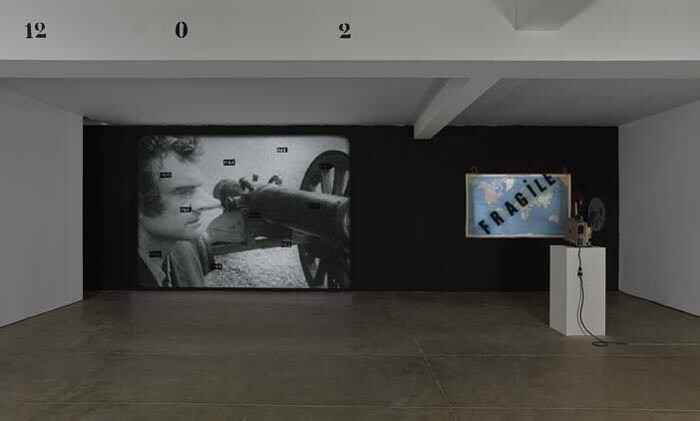
There is an ambiguous theatricality to the recent Marcel Broodthaers exhibition at Marian Goodman. The gallery has reconstructed the 1972 Section Cinéma in its entirety (three carefully installed rooms of films and objects), alongside the work’s precursor, the 1970 Cinéma Modèle. The theatrical effect is a combination of intention and history: the everydayness of objects, the deliberate archaic quality of the technology, their inevitable ageing, and the artifice of new additions like the freestanding entrance “door.” Given that the work attempts theater, cinema, museum, and gallery in one gesture, the ambiguity is surely a sign that it has aged well.
Section Cinéma is an institutional fiction for Broodthaers’s film work. Opposite the entrance, two director’s chairs survey the scene. One projector shows Broodthaers’s Musée Museum against an altered world map (Carte du monde poétique, 1972), the second projector faces a screen stenciled with numbers—”Fig. 1,” “Fig. 2,” and so on—where Broodthaers’s own films are interspersed with newsreels, Chaplin films, and documentaries, in succession and in no clear order. Yet there is a manic pedagogy at work—the film screen, the ceiling beam, the walls, and objects are all are marked as “figures” and turned into illustrations for an invisible commentary.
Three decades from …
Load more
